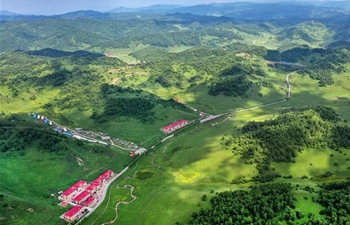LOS ANGELES, June 13 (Xinhua) -- NASA's Mars 2020 rover, its latest robotic mission to the Red Planet, will include technology to explore ancient life on Mars, according to NASA's Jet Propulsion Laboratory on Wednesday.
The science goal of the Mars 2020 rover is to look for signs of ancient life. It will be the first spacecraft to collect samples of the Martian surface, caching them in tubes that could be returned to Earth on a future mission.
The atmosphere on Mars is mostly carbon dioxide and extremely thin, about 100 times less dense than the Earth's, with no breathable oxygen. There's no water on the surface and the landscape is freezing, with no protection from the Sun's radiation or from passing dust storms.
The keys to survival will be technology, research and testing, said JPL, adding Mars 2020 will help on all those fronts.
When it is launched in July 2020, the spacecraft will carry the latest scientific and engineering tools.
Before touchdown on Mars, sensors in the spacecraft's aeroshell, the capsule that encloses the rover, will study how it heats up and performs during atmospheric entry.
The rover has a guidance system that will take a step toward safer landings. Called Terrain Relative Navigation, this new system figures out where the spacecraft is headed by taking camera images during descent and matching landmarks in them to a preloaded map.
If the spacecraft drifts toward dangerous terrain, it will divert to a safer landing target.
Living on Mars will require a steady supply of oxygen. A cube-shaped device, called the Mars Oxygen In-Situ Resource Utilization Experiment, is exploring a space-saving alternative that converts carbon dioxide into oxygen.
Mars 2020 will carry a ground-penetrating radar to Mars, which will be the first operated at the Martian surface. Scientists will use its high-resolution images to look at buried geology, like ancient lake beds.
The rover will also collect science that may help engineers design better shelters for future astronauts, said JPL.













